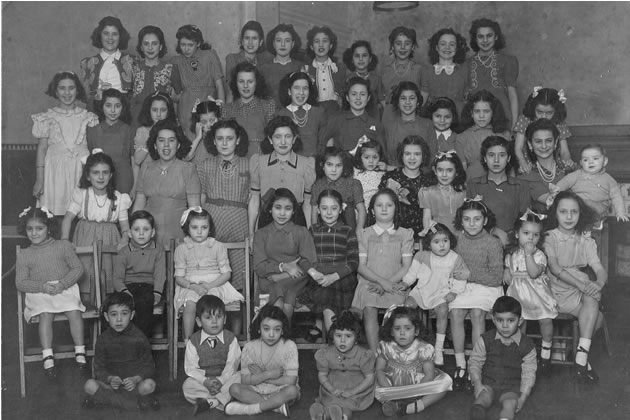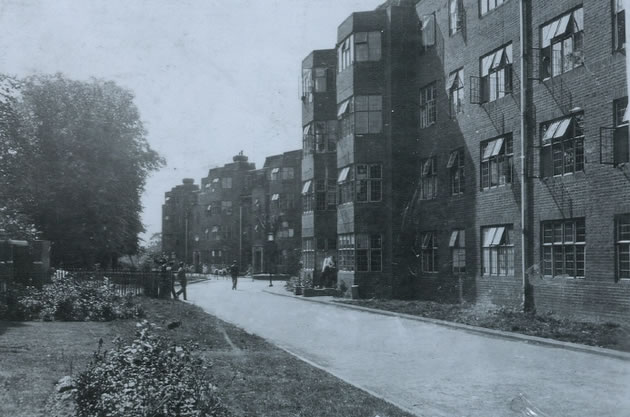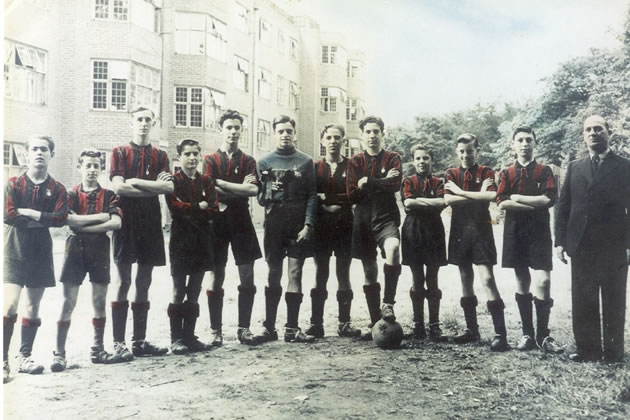Around 1,000 were housed in centres in the area during the Blitz

Gibraltar children at Whiteland’s with Joe Gingell sitting on floor, first from the right
A man who was evacuated from Gibraltar during the Second World War has documented the experience of those who were brought here in 1940 including around a thousand who, like him, were housed in Roehampton.
Joe Gingell tells how, at the outbreak of war, with uncertainty over the stance of Franco’s fascist regime in Spain, a large number of people from Gibraltar were evacuated to French Morocco which was the nearest allied territory. However, after the defeat of France and the destruction of the French Fleet at Oran by the Royal Navy, the Vichy French authorities order the expulsion of the Gibraltar evacuees who were given 24 hours to leave.
The British Commander in charge of the ships carrying the evacuees ignored Admiralty orders and took them back to Gibraltar so that the ships could be properly cleaned and provision for the dangerous voyage in the Atlantic ahead as the government was refusing to let them return home. Despite a lack of water and spoiled food stores most of the evacuees survived the trip.
Gibraltar became a fortress during the war and was no place for non-combatants which the military authorities came to categorized as “useless mouths. Later in the war as the tide of the struggle returned, Gibraltar was used as a base for the counter attack particularly during Operation Torch in which the Allied forces retook North Africa.
Arrangements were made by the War Office for the evacuee’s transfer with some going to Madeira and Jamaica but the bulk being sent to the UK. They arrived in London during the Blitz and the Battle of Britain with some of the evacuees being killed by German bombs.
By August 1940, there were 12,000 Gibraltar evacuees across London accommodated in buildings which had been converted into evacuation centres. These included two in the SW15 area – the Whiteland’s Teachers Training College and Highlands Heath in Roehampton. Each of them accommodating 500 Gibraltar evacuees from 1940 to 1944. Joe Gingell’s family was accommodated in Whiteland’s College which is now part of the University of Roehampton.

Highlands Heath during the war. Picture: Joe Gingell
Mr Gingell says, “Like me, there are still some with memories of those terrible years in London. By February 1944 when the Whiteland’s College was bombed, I was nearly 6 years and have vivid memories of the roof in flames. Then when my family was transferred to central London where there were some casualties from the flying bombs among the Gibraltar evacuees. At the end of the war half of the total number of evacuees returned to Gibraltar to join their families. The remaining other half were to live for four years in camps in Northern Ireland to await their gradual repatriation. Many of these evacuees had to wait for as much as ten years since the beginning of the war to rejoin their families in Gibraltar. “
 The Highlands Heath Gibraltar boys Football Team in 1941. Picture: Joe Gingell
The Highlands Heath Gibraltar boys Football Team in 1941. Picture: Joe Gingell
After the war there was a very acute shortage of accommodation in Gibraltar with poor medical and educational facilities. Owing to this, the repatriation and resettlement of the Gibraltar civilian population lasted from 1944 to late 1951 with some evacuees spending as long as 11 years in exile, mainly those sent to the camps in Northern Ireland. Due to the prolonged waiting period, about 2,000 evacuees decided to leave the camps for London to find work and settled there..
Mr Gingell returned to Roehampton twenty years ago and visited the centres with the aim of carrying out a research about the evacuation of the Gibraltar civilian population. Based on the research, he has published two books including ‘We Thank God and England’ in 2011 sales of which help raise funds for cancer and mental health charities.
Both books contain a vast amount of information about the evacuation of the Gibraltar civilian population information with many photos and extracts from newspapers and they can be downloaded free from the Gibraltar National Archives.
July 16, 2021